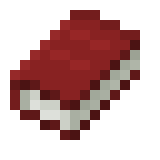Reviewer: Allan Jenks
Developer: Aquria Co Ltd.
Publisher: NIS America
Category: Role-Playing
Release Date: 3.12.2019
Price (at time of review): $49.99
Buy The Caligula Effect: Overdose from the eShop here.
Buy The Caligula Effect: Overdose from the Amazon here.
Why Am I Here?
Our hero starts off asking this very question. As the story goes, everyone inside The Mobius is there because of some trauma in their real-world lives that they are trying to escape. What is The Mobius, you might be asking? The Mobius is basically like The Matrix, but instead of machines farming and using humans as bio-batteries, as far as I can tell, it is basically machines taking in troubled humans and using them to power their world of mechanical pop stars.
Okay, there’s more to it than that, but that’s the short of it. You basically play the part of a high school student trapped in a virtual world, where only yourself and a handful of other random inhabitants have become aware of the artificial nature of this world, and they want out.

During the school orientation, after giving your speech to the class, you notice something strange about several of the students in attendance: their faces seem to be surreal, almost like a digital video glitch. They seem to notice you noticing them too, and you suddenly find yourself being pursued by several of these “Digiheads”, as they are called—inhabitants of The Mobius who have become so brainwashed by the program, and so overwhelmed by the emotions of their traumas that they are to the point of madness. These Digiheads see you for what the creators of The Mobius have dubbed you—a threat to the stability of this supposed virtual utopia, where everyone is a teenager in high school, regardless of who they are in the real world—and they will do whatever they can to defeat you and have you brainwashed and re-assimilated.

Who Needs a Story When the Battles Are This Fun?
The story gets a bit weirder and more convoluted as it goes, but I won’t spoil it for you. The story, to me, is almost secondary to my favorite part of this game: the battle system. I have never played a game with this type of battle system before. It may exist out there somewhere, but not in my library! It is a strange hybrid system that takes turn-based battles and mixes them with a tactical strategy, almost chess-like experience. So, how this works is that you get to select a move or chain of moves from your characters’ skill lists. Each character’s skills are divided into three categories:
-
Attack – Inflicts damage on enemies. Also called “The Catharsis Effect”.
-
Support – Provides buffs for yourself and allies, and de-buffs for enemies.
-
Action – Provides utilities like guarding or dashing to avoid an enemy’s attack.
Each character will have different types of physical attacks, some for close-range melee, some for long range countering, or some that only work if your enemy is either airborne or downed. Once your “Stress Gauge” becomes completely filled—it fills whenever you give or receive damage—you will also have an “Overdose Skill” available, which is an extremely strong special attack.
Support skills can range from granting your character a quicker skill cast time, to increasing your strength or defense, to focusing the enemy’s hate toward you and increasing your evasion—sort of a baiting technique to draw the enemies away from a vulnerable ally or to lure them into an ambush.
The Action skills are, as far as I have observed, the same for everyone: Soul Surge, which recharges your SP (which is consumed with each action); Dashing, which allows you to move to a different spot on the battlefield; Emergency Barrier, which places a shield bubble around your character to guard against an enemy attack; and Escape, which is pretty self-explanatory.

More About Battles
With all of these skills at your disposal, you have to decide which ones will work best for each situation, but rather than just randomly guessing and hoping for the best—which is a technique oft employed by yours truly—you get to program in a chain of commands for each character, and then you get to watch what is the equivalent of the spaghetti model hurricane forecast of RPG battling. You get to see a projected scenario where all of the skill commands you just entered in to your command chain play out, showing you where your attacks will likely land based on the position and action of the enemy, and it gives you a percentage of the likelihood of your attacks actually landing. If your attack isn’t landing quite right, or keeps getting blocked by your enemy’s shield, you can adjust the timing of each attack by moving the attack over a linear attack graph with your chain of commands laid out. If you can’t make the timing work, or want to try something different, you can just back out move by move and program different skills into the chain.
You can program up to 3 skills per character in a chain, but you can confirm your actions at any time and leave it at just one or two moves if you want. I found this to be a wise technique in some of the more difficult battles, because, while it is a lot easier to program a successfully-landed chain of attacks with only one or two characters fighting in the battle, once you get to the full four-person battle party, it gets a lot trickier to coordinate when each character has 3 moves in the queue. You can’t go back to a character to edit their chain once you have confirmed their actions, so you get what you get. You have to think a few moves ahead and a few moves behind all at the same time to get some of the cooler co-op attacks to land properly, like when one character uppercuts an enemy into the air and the other character uses their attack for airborne enemies and crushes them with a devastating combo, but I found it to be a welcome challenge. Plus, when you DO successfully program a four-person coordinated beatdown, it feels really good. You do, however, have the option of having your other allies on auto-play, but I just didn’t want to give up the controls enough to embrace this feature—though it did do a good job of selecting appropriate attacks for your other allies, for the most part.
Still Talking About Battles…
In The Caligula Effect: Overdose, there really aren’t any pieces of actual equipment to assign, but rather, a stigma system. You gain stigmas through battle drops, through befriending different students, or sometimes through Soul Remnants, which are pieces of individuals’ souls left behind after they leave The Mobius. These stigmas are divided into three categories: Attack Impulses, which improve damage and accuracy; Defense Impulses, which improve defense and increase max HP; and Amplifications, which enhance SP and critical strikes.
Battles occur when an enemy spots you. Sometimes an enemy will ignore you altogether, or may just not see you. If you sneak up on the enemy and hit the B-button, you can initiate the battle with a sucker punch, which raises the enemy’s Risk and gives you the upper hand in battle. Since all of your enemies are fellow students, but not all fellow students are enemies, the way you can tell them apart is by their erosion rate, which is a percentage displayed to the left of their name (which appears above their heads as they walk by you). If their erosion rate is below 50%, then they are not your enemy, but if the erosion rate is above 50%, they will fight you.

Ok. Let’s Talk About Making Friends…
Now, part of the game involves social networking, where you make friends with students by essentially engaging them in small talk over and over again, increasing your relationship level with them from stranger, to acquaintance, to friend. If you want to become friends with a student who is already a Digihead (erosion rate over 50%) then all you have to do is knock them out in a battle. Once you knock them out, their erosion rate will drop below 50% and they will be calm enough to talk with. Then you can make friends. To quote the tutorial directly, “Fight first, friends later.”
Now, some students simply don’t want to talk to you, even when they are calm and not Digiheads, and they will scold you for just coming up to them and randomly striking up a conversation. These students can still be won over, but you have to make friends with someone they are friends with to get your foot in the door. The game has a vast social network called The Wire, which is basically Messenger. You can text with anyone rated acquaintance or above with you. This part was a bit too much for me, as you basically just go through a bunch of different questions to ask people. You get a choice between different options, but there are only a limited number of questions in total to ask, so even if you skip a question, it will still come back up later on in your interrogation. They ask the hard-hitting questions we all want to know, like, “What’s your favorite kind of sushi?” or, “What’s your favorite place to shop?” which increases your relationship statuses with the different students.

Another tool used in the social networking portion of the game is The Causality Link, which is a giant chart that shows the web of intertwined student relationships. This will allow you to see which students are friends with the student you wish to befriend. Once you befriend a student, you can obtain new stigmas to equip, which was really my main motivation for playing along and making friends with people.
Audio/Visuals
The graphics in The Caligula Effect: Overdose are nothing mind-blowing, but they are smooth, bright, and colorful, and they really convey a very anime-series type of look. I have seen side-by-side comparisons of the Switch version and the PS Vita version of the game, and the lighting and shading in the Vita version was way better-looking than the Switch version. Most of the shading and shadows were completely missing from the Switch version, but had I not seen the Vita version, I really wouldn’t have known any different, and honestly, I still don’t really care. The graphics get the job done, and really don’t detract from the overall experience.

The audio was also nothing ground-breaking, but the Japanese voice work—no English voice acting in this one, only subs—was great. Again, it felt like watching a cheesy high school anime drama. The music is just bright poppy little tunes that go on in the background. It kind of felt like I was listening to a medley of all the intro and outro theme songs for every Adult Swim anime ever. The sound effects for battle were spot-on, and really pulled you into the battle—even if there was still a corny pop song playing cheerily in the background the whole time.

Wrapping Up (Thank You For Coming to My TedTalk)
I thoroughly enjoyed my time with The Caligula Effect: Overdose, and though the story wasn’t my favorite part, it was still pretty good. My favorite part was obviously the battle system. I’m not sure if I truly did it justice in my explanation, but once you experience it for yourself, it will make more sense. If you love RPGs, anime, strategy battling, chess, or turn-based fighting, then I would definitely recommend checking out this game and adding it to your library.
Score: 8.5/10
Buy The Caligula Effect: Overdose from the eShop here.
Buy The Caligula Effect: Overdose from the Amazon here.
Follow Aquria Co. Ltd.
Follow NIS America
*Review Code Provided by NIS America
Categories
Recent Posts
Tags
#Broforce #dev #DRIVE #FE #indie #indies #Kickstarter #kickstarter #Minit #nindies #Nindies #Nintendo #NintendoSwitch #Owlboy #RaceDieRun #Switch #SwitchCommunity #switchcorps #SwitchCorps #SwitchCorps #Switchiversary #SwitchLewd #SwitchLewds #Switchruary #Twitch #videogames #VitaIsland #YouTube




Leave a Reply